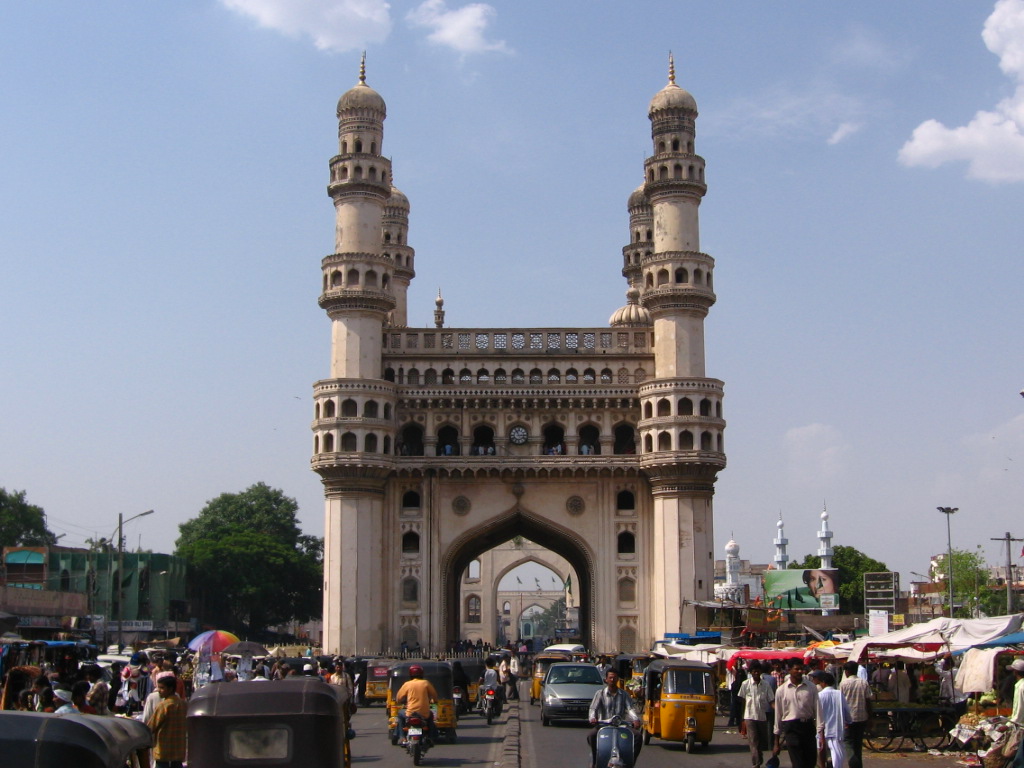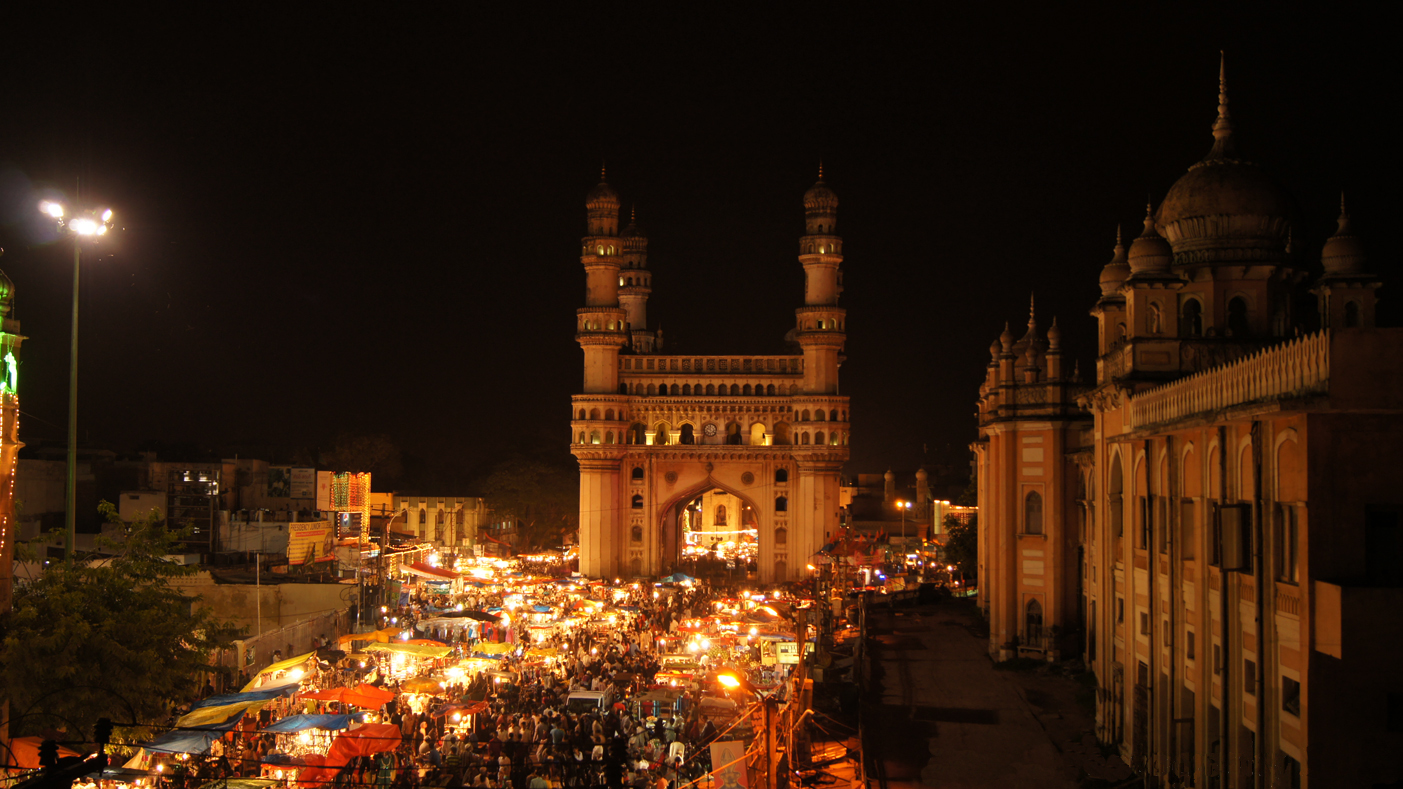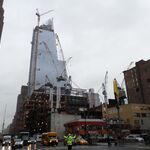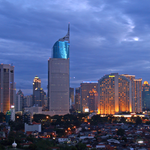Among the most globally recognized structures in India, Charminar was built by Sultan Muhammad Quli Qutb Shah in 1591. Rising to 160 feet, the structure was completed in 1594. The exact purpose for which Charminar was constructed is unknown, but the widely held theory is that it commemorates the end of a deadly plague that was afflicting the city at the time. When Hyderabad was planned, it was designed with this structure as its centrepiece, with segregated establishments in four different quarters of the city.
 Charminar in the 1800s, image via Wikipedia Commons
Charminar in the 1800s, image via Wikipedia Commons
The name Charminar means four towers or pillars, which is reflective landmark's structure. It is made up of four minarets, all connected by grand arches that open on to the four most active royal ancestral streets. Each minaret has a double balcony and is topped by a dome. Additionally, a mosque is located on the top floor of Charminar, and 45 prayer spaces were incorporated into the gallery. Commonly observed in Islamic architecture, mashrabiya screens are incorporated into the balcony and floral motifs line the interior dome. The structure is made of granite, limestone, mortar, and pulverized marble, materials that helped the structure survive to this day. Legends speak of an underground tunnel leading from Charminar to Golkonda Fort for the Sultan to escape in case of a siege, but its existence has never been proven.
 Charminar in 2006, image by Flickr User Soham Banerjee via Creative Commons
Charminar in 2006, image by Flickr User Soham Banerjee via Creative Commons
Customarily, there would be a line of merchants and shops lining the street towards Charminar, but now the marketplace has grown and expanded into a bustling smorgasbord of shops densely strewn around the landmark such as Laad Bazaar, famous for bangles, and Pather Gatti, famous for pearls.
 Charminar marketplace at night, image via Wikipedia Commons
Charminar marketplace at night, image via Wikipedia Commons
It is estimated that there are around 14,000 shops in the Charminar marketplace. The extraordinary architectural fusion of traditional Indian and Islamic architecture represented in Charminar reflects the people of the city both at the time it was built and still today, making it a worthy representation of Hyderabad.
Have an idea for a future Throwback Thursday? Let us know by leaving a comment in the field below!

 989
989 













































